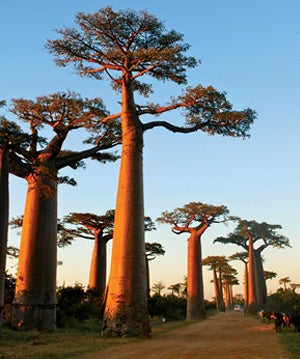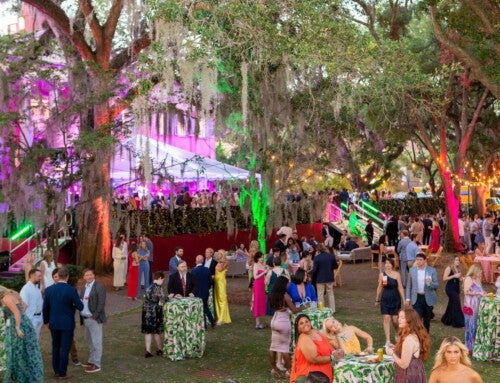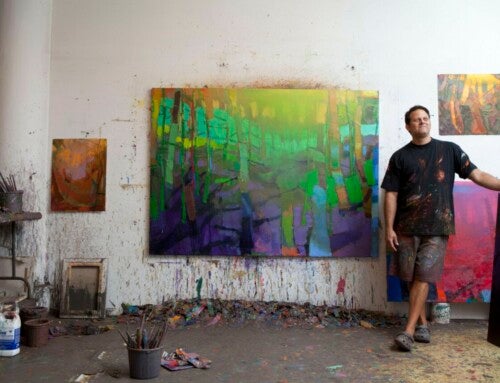Words and Pictures by Katie Browne ’09
The College of Charleston consistently ranks in the top 15 in producing Peace Corps volunteers for medium colleges and universities. And while the sheer number of CofC volunteers produced over the last five years is impressive (155), as you’ll see in this alumna’s photo-essay, it’s the individual experience, repeated near and far, that truly makes a difference.
The day I received my Peace Corps invitation, I began (helplessly, subconsciously, but inevitably) forming wild expectations about what life would be like in the great beyond. I told others, “No, no, I have no idea, and I like it that way. I will find out when I get off the plane.” In reality, I researched frantically, and even more frantically began building this alternative world in my mind, trying always to imagine the unimaginable life that awaited me there.
At the crux of this imaginary world was a narrative of personal struggle and growth, of obstacles surmounted, of ultimate acceptance in a place far beyond and far away. And when I finally did step off that plane, I found that world. Madagascar was exotic, and welcoming, and everything unimaginable that I thought it would be. And in keeping with the narrative, there have been countless times when I have stopped to think: I do belong here.
But there was a secondary narrative that equally defined my time in Madagascar. For every moment that I stopped to think I belong, I also recognized that I was something fundamentally foreign in this land. It was not just my white skin, or the fact that I was tall in a country of moderately to very short people. It was something that went much deeper, to my identity, to my world view, to my understanding of myself. In my three years, I made countless friends, worked, lived, laughed and shared among Malagasy people, but as long as I stayed, I would be forever defined by my difference, by what set me apart.
I know, from a distance, life in Madagascar looks beautiful. And it absolutely is. Not just the tropical beaches, the coral reefs, the rain forests, the terraced rice paddies, the mountains and waterfalls. It is often understated, something quiet and simple. The pace of life removed from all the rush of the modern world. The people. Stalks of rice laid out to dry. The sound of rain on the roof at night. The slow rising of a village in the early morning. Mounds of fruit piled colorfully up in the market. Canoes scattered across a perfect blue sea.
But life in Madagascar can also be mundane, unpleasant, downright horrid. Only on the rarest of occasions is it glamorous. Crushing heat, crushing boredom. Dust. Mud. Screaming children. Bugs in your food. Dirty water. No food. No water. My time in Madagascar was defined as much, if not more, by these long hours and small steady hardships as it was by the beauty of the place and the people. They are two sides of the same coin.
I would be remiss, though, if I did not concede that living in Madagascar was tremendously cool. There is no place like it. Chameleons stroll across the road in their strange jerk-step manner. The water always seems to be bioluminescent. Whole villages smell of cloves and vanilla. Lemurs may not actually be as prevalent as squirrels, but after three years they became routine enough to be unexciting. I witnessed bull sacrifices and exorcisms, met witches and conjurers. I drank coconuts fresh fallen from trees and sent kids out to fetch mangos. I did a thousand things I could not have imagined, things that it now seems unimaginable I could have not done.
In the same vein, Madagascar is an adventurers’ playground. Strike off in any direction, by boat, on foot, even by plane, and you are bound to stumble across the unexpected. It would be unfair and inaccurate to label the country uncivilized – but it is a land stuck in a different time. Or, if you will, a non- time, where the broken is never fixed, where isolation and disintegration work in collaboration, where the notion of a difficult journey must be redefined. The going was rarely easy, but almost always rewarding.
One side of the Peace Corps life that people rarely see, hear or speak of are the downswings. For every rewarding work experience, for every epic adventure and beautiful beach, there was a dark time. Constant illness. Allergic reactions to unknown causes (just see my face!). Loneliness. An overwhelming sense of the futility of what you are attempting. A reckoning with your own naiveté. Isolation. Heat stroke. Near constant mockery and harassment. Mefloquine dreams. Language barriers. Emotional and physical exhaustion. Fear of missing out, wasting away in obscurity and being forgotten.
Of course, I ultimately discovered, these battles are with yourself. And standing at the end of a long and rocky road, I can say that overcoming each of these dark times, often many times, empowered me many times over. Come on, if I can bounce back from my face looking like that, I can bounce back from anything.
Through it all – the good, the bad and the ugly – the most important lesson I learned was simple: Simplify. In my village, the things that I used every single day hung in a row on my wall: keys, secondhand hat, backpack, bag and rice winnower. (The snake stick was, admittedly, for extracurricular adventures.) Already, I look back on this and it seems impossible. But the purest and calmest happiness that I felt in Madagascar was in those quiet village moments, when nothing much was happening at all.
A country is not an empty place. You arrive to find it full of people living their lives, and when you depart those lives go on without you. Though I take many things, the greatest portion of the Madagascar-shaped hole in my heart is filled with the faces of those people with whom I passed my days. I will be forever changed by the things that they taught me, whether they meant to or not.
In the end, I don’t need a thousand words to describe all that was Madagascar. I can do it in four: Just embrace it all.
Read more about Browne’s adventures in Madagascar and check out all of her beautiful imagery at SightsUnseenPhotography.com.









